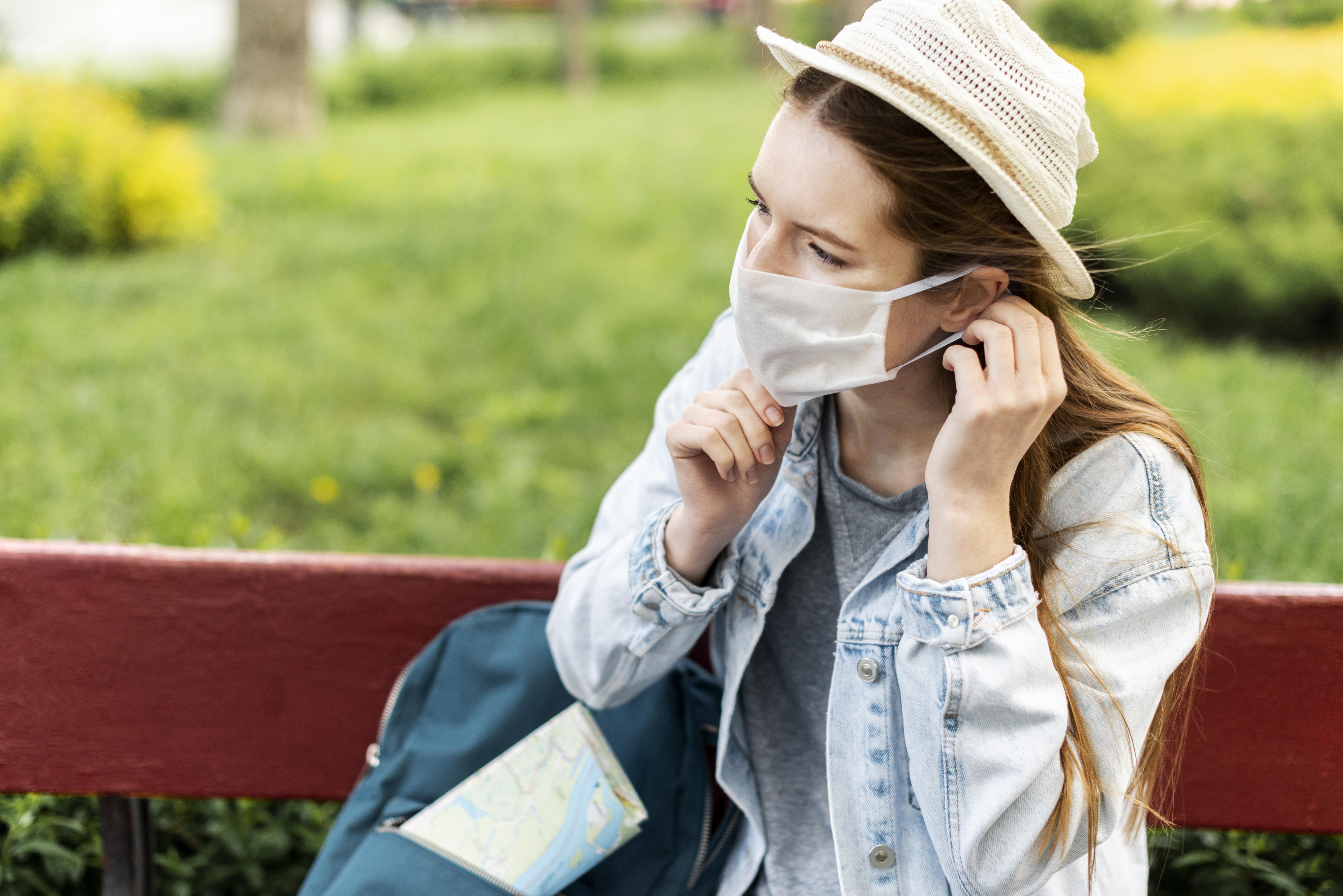Book on Whatsapp
9892101616
Here's some unheard information about H3N2 VIRUS!
Viral Infection
Sat Jul 08 2023
Influenza A Virus subtype H3N2 is defined as a subtype of virus that causes Influenza. H3N2 viruses usually affect birds and mammals. This virus has mutated into multiple strains in humans, birds and pigs. This is a respiratory viral infection that causes health problems every year.
HERE ARE THE SYMPTOMS OF H3N2 VIRUS:
- Cough
- Runny nose or congested nose
- Sore throat, headaches
- Body aches
- Fever
- Chills,
- Fatigue
- Diarrhoea
- Vomiting
- Breathlessness
How H3N2 influenza differs from COVID-19?
H3N2 influenza and COVID-19 are caused by highly infectious viruses. These viruses can spread through droplets and can also mutate significantly. Although these respiratory diseases originate from a different family of viruses, they are contagious and are easily transmitted. COVID is caused due to SARs-CoV-2 virus. Meanwhile, the H3N2 virus is an influenza A subtype occurring in humans. The latter has reportedly seen many cases of hospitalizations rather than other virus variants.
What makes H3N2 influenza stand out from the rest?
The reported cases of the influenza virus are spotted under upper respiratory tract symptoms. They are inclusive of headache, runny nose, sore throat, whooping cough etc. Although, the noteworthy symptom is a persistent cough that doesn’t seem to fade away. As per Indian Medical Association (IMA) seasonal fever usually persists from five to seven days, however, in certain cases, the cough can last for approximately three weeks.
How to identify whether it is COVID or flu?
It goes without saying that getting a health check-up is the one and only method to find out if you have COVID or the flu. Try opting for Rapid Antigen test as its results are quickly delivered or an RT-PCR Test , which gives quite accurate results but can take some time to deliver results. COVID and FLU tests usually need a respiratory sample, for instance, a nasal swab to track the flu presence in the body.
Dos and Don’ts
- Wash your hands frequently. Use soap and water to thoroughly clean your hands, or an alcohol-based hand sanitiser if neither is available.
- Cover your coughs and sneezes. Sneeze or cough into a tissue or your elbow. Wash your hands quickly.
- Avoid touching your face excessively, including your eyes, nose, and mouth.
- Keep commonly touched surfaces clean to avoid taking up the virus and transmitting it to your body.
- Avoid crowds. Avoid congested regions whenever feasible. Maintain your distance from sick people if you are at high risk of flu complications due to your age, health, or both.
- Wear a mask and carry a hand sanitiser with you.
- Do not share personal items like clothes, towels, or water bottles.
- Stay hydrated and eat a healthy diet to boost your immune system.
- Get regular check-up or consult your doctor, to avoid severe disease and its complications.
Manipal TRUtst provides Fast, Accurate and Quality Reports to ensure the wellbeing of our patients. If you are feeling the signs of a critical flu equivalent to Covid-19, then opt for Manipal TRUtest INFLUENZA H3N2 RT-PCR within the comfort of your home. Wellness is an absolute balance of mind, body and soul in alignment.
Related Blogs

Viral Infection
Common Infections during the Weather Transition Prevention and Diagnosis
Seasonal changes often bring comfort and freshness, but they also create conditions that allow infections to spread more easily. The transition between hot and cold weather, or from dry to humid conditions, weakens the body’s natural defenses and makes people more prone to illnesses. During this period, sudden temperature fluctuations affect the immune system, creating an environment in which bacteria, viruses, and fungi thrive. Understanding common infections, their symptoms, methods of prevention, and accurate diagnosis is essential for maintaining good health during these weather shifts.
Common Infections During Weather Transition
- Common Cold and Flu – Viral infections such as influenza and rhinovirus are widespread when seasons change. Sudden exposure to cold air or damp weather weakens the respiratory system, leading to symptoms like sore throat, cough, fever, and nasal congestion.
- Respiratory Tract Infections – Bronchitis, pneumonia, and sinusitis often increase during transitional seasons. Poor air quality, allergens, and fluctuating humidity levels contribute to their spread.
- Gastrointestinal Infections – Changes in food storage and water quality can lead to bacterial infections like gastroenteritis. Contaminated food or water often results in diarrhea, vomiting, and stomach cramps.
- Skin and Fungal Infections – Humidity and sweating during seasonal changes encourage fungal growth. Athlete’s foot, ringworm, and candida become more common.
- Allergies and Asthma Flare-ups – While not strictly infections, allergic reactions worsen during seasonal changes, weakening immunity and making individuals more vulnerable to infections.
Prevention of Seasonal Infections
Preventing infections requires a proactive approach and conscious lifestyle choices. Some effective measures include:
- Maintain Good Hygiene: Washing hands regularly with soap and water reduces the risk of viral and bacterial transmission. Avoid touching the face frequently to minimize exposure.
- Balanced Diet: Eating seasonal fruits, vegetables, and foods rich in vitamins C and D strengthens immunity. Probiotics such as yogurt support gut health and prevent gastrointestinal infections.
- Adequate Hydration: Drinking clean and safe water helps flush out toxins and keeps the body resilient against infections.
- Proper Clothing: Wearing weather-appropriate clothing prevents sudden chills or overheating, which otherwise strain the immune system.
- Vaccination: Annual flu shots and other recommended vaccines provide strong protection during transitional weather.
- Environmental Care: Maintaining clean surroundings, ensuring proper ventilation, and avoiding exposure to damp and dusty environments reduces the spread of infections.
Diagnosis and Early Detection
Accurate and timely diagnosis ensures effective treatment and reduces complications. Common diagnostic practices include:
- Clinical Examination: Doctors assess symptoms such as fever, cough, congestion, or rashes to identify the infection type.
- Laboratory Tests: Blood tests, throat swabs, sputum cultures, and stool samples help detect specific bacterial or viral pathogens.
- Imaging Tests: For respiratory infections, chest X-rays or CT scans may be recommended.
- Allergy and Sensitivity Tests: In cases where infections are linked with allergic triggers, these tests provide clarity.
Stay Ahead with Manipal TRUtest
Regular health check-ups can detect infections and immune imbalances early, ensuring timely care. At Manipal TRUtest Diagnostics, our expert team and advanced testing technology help you monitor your health accurately through every season. Whether it’s detecting infections, assessing vitamin levels, or conducting preventive screenings, we ensure trusted diagnostics for your well-being — every day, every season.

Viral Infection
How Seasonal Changes Impact Your Immunity and What to Do About It
The human body is designed to adapt to different environments, but seasonal changes often challenge the immune system in many ways. Shifts in temperature, humidity, and daylight hours can make people more vulnerable to infections and allergies. Understanding how seasons affect immunity and knowing the right preventive steps can help maintain good health throughout the year.
How Seasons Affect Immunity
Winter
During winter, colder temperatures force people indoors, often in crowded spaces with poor ventilation. This environment allows viruses such as the flu and common cold to spread easily. The lack of sunlight also reduces vitamin D levels, which play an important role in strengthening the immune system.
Summer
Hot summer months can lead to dehydration and heat exhaustion, which indirectly weakens immunity. Excessive sweating and fluid loss disturb the body’s balance of electrolytes. Food spoilage is also common in high temperatures, increasing the risk of foodborne infections.
Monsoon
The rainy season creates favorable conditions for bacterial, viral, and fungal infections. Waterborne diseases such as typhoid, cholera, and hepatitis become more common while the damp weather also triggers respiratory infections and fungal skin conditions.
Spring and Autumn
These transitional seasons bring sudden changes in temperature, which may stress the body. Allergies due to pollen, dust, or molds are common in spring, while autumn often brings fluctuations in humidity and an increased risk of flu.
Why Immunity Weakens with Seasonal Change
Seasonal shifts affect the body’s natural rhythm. Exposure to sudden temperature differences, reduced sunlight, and dietary changes disturbs the immune response. The body takes time to adjust, and during this period, people may experience fatigue, allergies, or frequent infections. Stress, poor sleep, and lack of proper nutrition further lower resistance to diseases during these times.
Steps to Protect Immunity During Seasonal Changes
- Eat a Balanced Diet
A nutrient-rich diet supports the immune system. Fresh fruits, vegetables, whole grains, and lean proteins provide vitamins and minerals essential for good health. Vitamin C, zinc, and vitamin D are especially important to fight infections. - Stay Hydrated
Drinking enough water keeps the body hydrated and helps flush out toxins. Herbal teas, soups, and seasonal fruits with high water content are also beneficial. - Exercise Regularly
Moderate physical activity, such as walking, yoga, or cycling, boosts circulation and strengthens immune function. Exercise also reduces stress, which otherwise weakens immunity. - Get Adequate Sleep
Aim for 7–8 hours of uninterrupted sleep. Proper rest enhances the production of infection-fighting white blood cells. - Maintain Hygiene
Washing hands regularly, keeping surroundings clean, and practicing safe food habits are simple but effective ways to prevent infections. - Dress According to Weather
Wearing clothes suitable for the season protects the body from extreme temperatures and reduces the risk of catching colds or heat-related illnesses. - Take Preventive Health Check-Ups
Seasonal changes are the right time to go for basic health tests such as vitamin checks, blood sugar, or a complete blood count. Early detection of deficiencies or imbalances helps in better management.
Seasonal changes are inevitable, but their effects on immunity can be minimized with mindful care. Balanced nutrition, proper hydration, adequate rest, and regular check-ups form the foundation of year-round wellness.
At Manipal TRUtest Diagnostics, comprehensive preventive health packages — including vitamin, thyroid, and immunity profiles — help you stay one step ahead of seasonal illnesses. With accurate reports and expert-backed guidance, you can strengthen your immunity and enjoy good health, no matter the season.

Viral Infection
Benefits of Timely Testing During Fever and Infection
Fever is the body’s natural response to infections. It signals that the immune system is actively fighting against the harmful pathogens such as bacteria, viruses, or fungi. While a mild fever often resolves on its own, a persistent or high-grade fever can indicate an underlying infection that requires medical attention. In such cases, timely diagnostic testing plays a critical role in identifying the cause of the illness and guiding appropriate treatment. Ignoring a prolonged fever or delaying tests can lead to complications and poor health outcomes.
Accurate Diagnosis of the Underlying Condition
One of the primary benefits of timely testing during fever and infection is the ability to diagnose the root cause accurately. A fever can be a symptom of a wide range of conditions, including viral infections such as dengue or influenza, as well as bacterial infections like typhoid or urinary tract infections (UTIs). Diagnostic tests such as complete blood count (CBC), fever panel, blood cultures, or specific tests like malaria or dengue antigen tests help identify the specific organism responsible for the illness. An accurate diagnosis ensures that the patient receives the most effective treatment and avoids unnecessary medications.
Early Detection Prevents Complications
Some infections progress faster than we realize. When fever strikes, don’t just guess the cause - test it.
Early testing can help detect potentially dangerous infections before they worsen. For instance, infections like dengue or leptospirosis can rapidly progress if not diagnosed and treated in time. A delayed diagnosis may lead to severe complications such as dehydration, organ failure, or even death.
Reduces the Risk of Transmission
Infections like influenza, and tuberculosis are highly contagious. Timely testing during the onset of symptoms, especially fever, helps in identifying such infections early and isolating the patient to prevent further spread. This is particularly important in households with children, elderly family members, or individuals with weakened immune systems. Early detection through testing also enables health authorities to take preventive measures in the community.
Helps Avoid Self-Medication and Misdiagnosis
Many individuals tend to self-medicate when they develop a fever, assuming it is a minor viral infection. However, self-medication can be harmful, especially if the actual cause is a serious bacterial or parasitic infection. By undergoing timely tests, individuals can avoid misdiagnosis and receive appropriate medical advice. This also prevents the misuse of antibiotics, which is a major cause of antibiotic resistance.
Supports Monitoring and Better Treatment Planning
Timely testing during fever or infection helps doctors monitor the illness's progression and adjust treatment accordingly. For example, repeated blood tests may be necessary to assess whether a patient's white blood cell count is returning to normal or if the infection is worsening. This data helps healthcare professionals make informed decisions, improve treatment outcomes, and avoid unnecessary hospitalizations.
Peace of Mind for the Patient
Knowing the exact cause of fever through timely testing can also bring peace of mind to patients and their families. It reduces anxiety, eliminates guesswork, and provides a clear path to recovery. Rather than waiting in uncertainty, patients can take swift action based on reliable test results.
Timely testing during fever and infection is not just a diagnostic step, it is a crucial component of effective healthcare. It helps in identifying the cause, preventing complications, limiting disease transmission, and supporting accurate treatment. Investing in early testing is a proactive approach to health that ensures quicker recovery, reduces healthcare costs in the long run, and ultimately saves lives.
